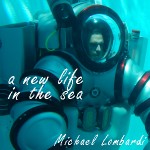 With 24 hours of travel time, the bulk of which was the trans-arctic flight from New Jersey to Hong Kong, I managed to read Dr. Joe MacInnis’ ‘Breathing Underwater : The Quest to Live in the Sea’ cover to cover. I suppose the flight path over the arctic lent some credence to the reading selection, as MacInnis was among the first to support diving science beneath the North Pole.
With 24 hours of travel time, the bulk of which was the trans-arctic flight from New Jersey to Hong Kong, I managed to read Dr. Joe MacInnis’ ‘Breathing Underwater : The Quest to Live in the Sea’ cover to cover. I suppose the flight path over the arctic lent some credence to the reading selection, as MacInnis was among the first to support diving science beneath the North Pole.
The book tracks the lineage of the numerous 20th century ‘life in the sea’ programs, principally throughout the 1960’s and 1970’s. MacInnis provides his firsthand accounts as a diving medical doctor participating in these many programs. For folks like me who advocate renewing advanced efforts on modern approaches to life in the sea initiatives, the book is a must read. There is historical perspective offered, and glimpses into the technology of the day which helps place any modern initiative in critical perspective.
Those early works were driven from a couple of market opportunities. First was the opportunity to evaluate human performance while living underwater as an analog to human performance in space. In my opinion, that opportunity remains today with our sights set on Mars and beyond within our generation. Second was the potential for humans to support commercial exploration for oil along the continental shelf. That market did indeed open up, and saturation diving is a mainstay on many offshore oil rigs today.
It’s hugely unfair to summarize all of this pioneering work in a few paragraphs, but perhaps the most important thing learned from these at a program level is that it requires massive investment for hardware, personnel, and ongoing proficiency operations. Given the virtual vaporization of these efforts in recent years, it should be obvious that the economics of living on the seafloor to advance that art and science in and of itself, with existing known technology anyway, just doesn’t work.
Towards the tail end of MacInnis’ story, he treads lightly into the area of smaller habitats, most notably Sub Igloo. In some ways, that effort takes his journey full circle, back to the early Ed Link days when experimenting with SPID and similar systems. I remain convinced that these small scale, portable systems are the way forward – certainly for science anyway.
What we have today that wasn’t around more than a half century ago is a large diving community with rather sustainable business enterprise, and a thirst for all things new in gadgetry, and new experiences. With that have come established processes for health and safety standards, training standards, equipment testing and ‘approvals’, and so on. We are primed for incremental advancement and expanding the enterprise, versus those pioneering days where it took quantum leaps to start something new and exciting. That perspective, coupled with the massive advances in rebreathers as a commodity tool may well be the ticket to some success in revisiting life in the sea today.
In any case, MacInnis’ prose offers great insight into the golden era of human ocean exploration, and is a reminder that there is much work to be done – oceans of opportunity in fact, for a new life in the sea.



